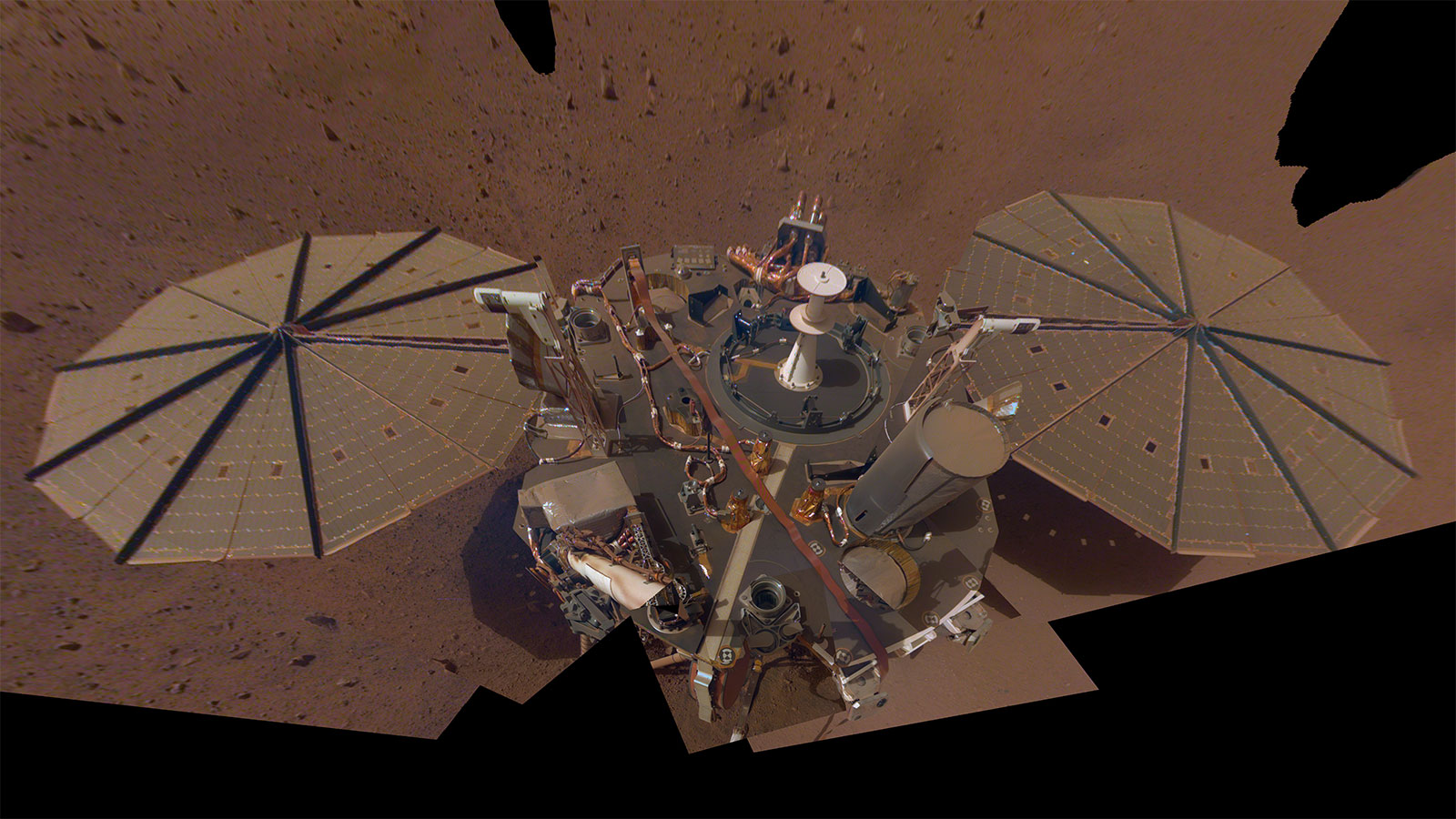
Winds on Mars might have caused the ultimate demise of the Opportunity rover, but they could also help extend the life of the InSight mission. The same winds that blow dust onto spacecrafts’ solar panels can also blow that dust away, so scientists are now studying the way wind affects InSight’s power generation.
Spacecraft like InSight and Opportunity use solar panels to generate power from the rays of the Sun. When a wind storm blows in, it kicks up dust which coats the panels and reduces their efficiency. Since it landed, the efficiency of InSights solar panels has fallen by 30%. But when there is already a layer of dust on the panels then they can actually be cleared by strong winds.
On February 1, 2019, InSight was in the path of a wind vortex, also known as a dust devil. As the vortex rolled through the area, the solar panels on the craft showed a bump in power output of 0.7% on one panel and 2.7% on the other. Previous craft have shown a power boost of up to 10% after significant wind gusts.
Although the recent wind’s effects on InSight won’t make a practical difference to the rover’s longevity, they do give useful information about the Martian weather. “It didn’t make a significant difference to our power output, but this first event is fascinating science,” InSight science team member Ralph Lorenz of Johns Hopkins University’s Applied Physics Laboratory said in a statement. “It gives us a starting point for understanding how the wind is driving changes on the surface. We still don’t really know how much wind it takes to lift dust on Mars.”
The amount of dust on the panels is measured using information from InSight’s weather sensors, called the Auxiliary Payload Sensor Suite. The sensors detected a series of changes as the wind vortex passed by, including a 180 degree change in the direction of the wind and a peak wind speed of 45 miles per hour. There was also the largest drop in air pressure ever recorded on the surface of Mars, with a 13% drop in ambient pressure.
InSight is the first Mars mission to collect round the clock data on both the dust and the wind, and this information could be used to improve the design of future solar powered landers.
Editors' Recommendations
- Mars lander InSight is awake from safe mode after dust storm
- Why the Mars InSight lander is covering itself in dirt
- NASA’s InSight lander is going into hibernation for the Martian winter
- NASA’s InSight lander finally buries its probe beneath Martian surface
- NASA’s InSight lander shows what’s beneath Mars’ surface



